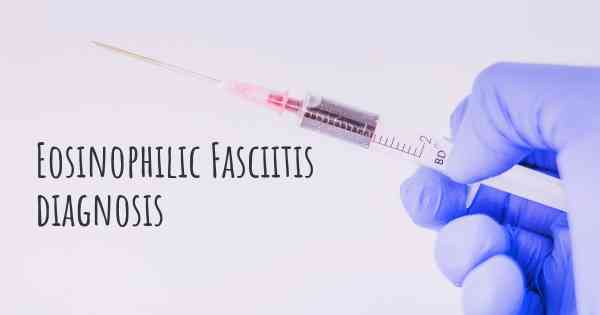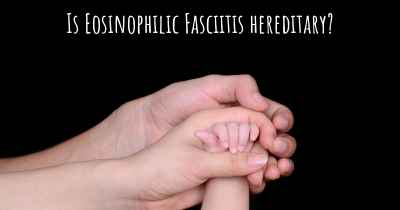How is Eosinophilic Fasciitis diagnosed?
See how Eosinophilic Fasciitis is diagnosed. Which specialists are essential to meet, what tests are needed and other useful information for the diagnosis of Eosinophilic Fasciitis

Eosinophilic Fasciitis (EF) is a rare condition characterized by inflammation and thickening of the fascia, the connective tissue that surrounds muscles, blood vessels, and nerves. Diagnosing EF can be challenging due to its similarity to other conditions, but a combination of clinical evaluation, laboratory tests, imaging studies, and sometimes a biopsy can help confirm the diagnosis.
Clinical Evaluation:
The first step in diagnosing EF involves a thorough clinical evaluation by a healthcare professional. They will review the patient's medical history, assess their symptoms, and perform a physical examination. The characteristic symptoms of EF include swelling, pain, and stiffness in the limbs, particularly the arms and legs. The skin over the affected areas may appear shiny and tight.
Laboratory Tests:
Several laboratory tests can aid in the diagnosis of EF. Blood tests are commonly performed to measure the levels of eosinophils, a type of white blood cell that is often elevated in EF. Additionally, markers of inflammation, such as erythrocyte sedimentation rate (ESR) and C-reactive protein (CRP), may be elevated. These tests help to rule out other conditions and support the diagnosis of EF.
Imaging Studies:
Imaging studies can provide valuable information in diagnosing EF. X-rays may be taken to assess the extent of fascial thickening and rule out other conditions affecting the bones and joints. Magnetic Resonance Imaging (MRI) is particularly useful in visualizing the affected fascia and detecting any abnormalities. It can help differentiate EF from other conditions with similar symptoms.
Biopsy:
In some cases, a biopsy may be necessary to confirm the diagnosis of EF. During a biopsy, a small sample of the affected fascia is surgically removed and examined under a microscope. The presence of eosinophils infiltrating the fascia is a key finding in EF. Biopsy can also help exclude other conditions that may mimic EF.
Other Considerations:
It is important to note that diagnosing EF can be challenging due to its rarity and similarity to other conditions, such as systemic sclerosis and morphea. Therefore, a multidisciplinary approach involving rheumatologists, dermatologists, and other specialists may be necessary to reach an accurate diagnosis.
In summary, diagnosing Eosinophilic Fasciitis involves a combination of clinical evaluation, laboratory tests, imaging studies, and sometimes a biopsy. The clinical evaluation includes reviewing the patient's medical history, assessing symptoms, and performing a physical examination. Laboratory tests measure eosinophil levels, markers of inflammation, and help rule out other conditions. Imaging studies, such as X-rays and MRI, visualize the affected fascia and detect abnormalities. In some cases, a biopsy may be necessary to confirm the diagnosis by examining the presence of eosinophils in the fascia. Due to the rarity and similarity to other conditions, a multidisciplinary approach may be required for an accurate diagnosis.
Posted Oct 21, 2021 by Doug Mueller 1150








